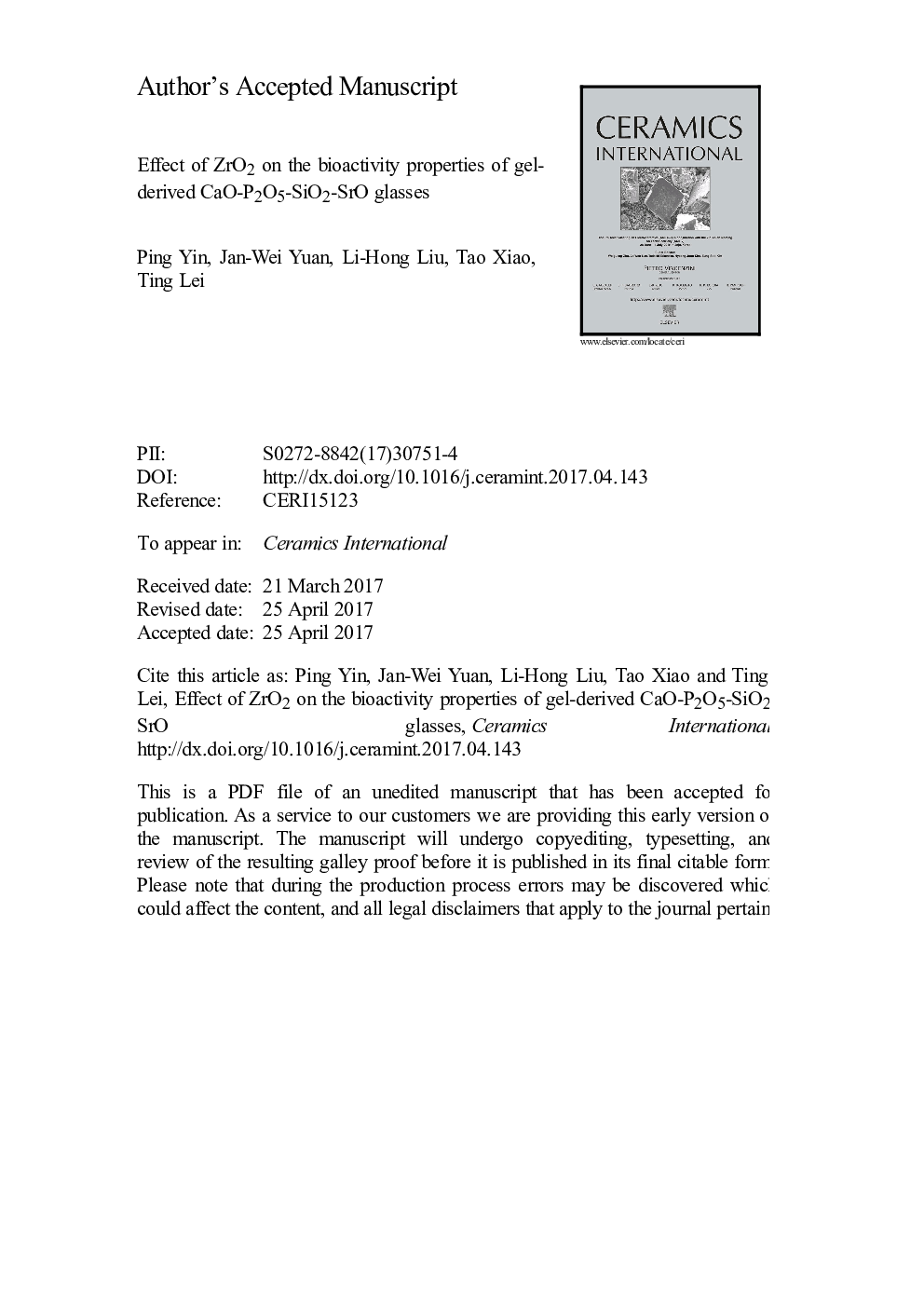| Article ID | Journal | Published Year | Pages | File Type |
|---|---|---|---|---|
| 5437619 | Ceramics International | 2017 | 35 Pages |
Abstract
Zr-incorporated CaO-P2O5-SiO2-SrO-ZrO2 (BG-Zr) bioactive glasses were prepared through the sol-gel process by adding zirconium oxychloride to the synthesis batch as the zirconia precursor. The added amount of ZrO2 was 5, 8 and 11Â wt%, respectively, to replace the same amount of CaO. The effect of ZrO2 on the solubility, bioactivity and structural properties of BG-Zr were investigated. The differential thermal analysis (TG/DTA) and X-ray diffraction (XRD) indicated that the addition of ZrO2 to the base glass composition increased its crystallization temperature as well as weakened its crystallization tendency. Zr4+ ion substituted for Ca2+ favors covalent O-Zr-O bonding formation, making the glass network stronger, and thus BG-Zr glasses exhibit enhanced bending strength. Immersion tests in hydroxymethylaminomethane (Tris) buffer and simulated body fluid (SBF) show BG-Zr glasses to exhibit slower dissolution rate and lower rate of apatite formation with increasing ZrO2 content compared to the base glass, which is likely associated with their structure stabilization and lower solubility.
Related Topics
Physical Sciences and Engineering
Materials Science
Ceramics and Composites
Authors
Ping Yin, Jan-Wei Yuan, Li-Hong Liu, Tao Xiao, Ting Lei,
